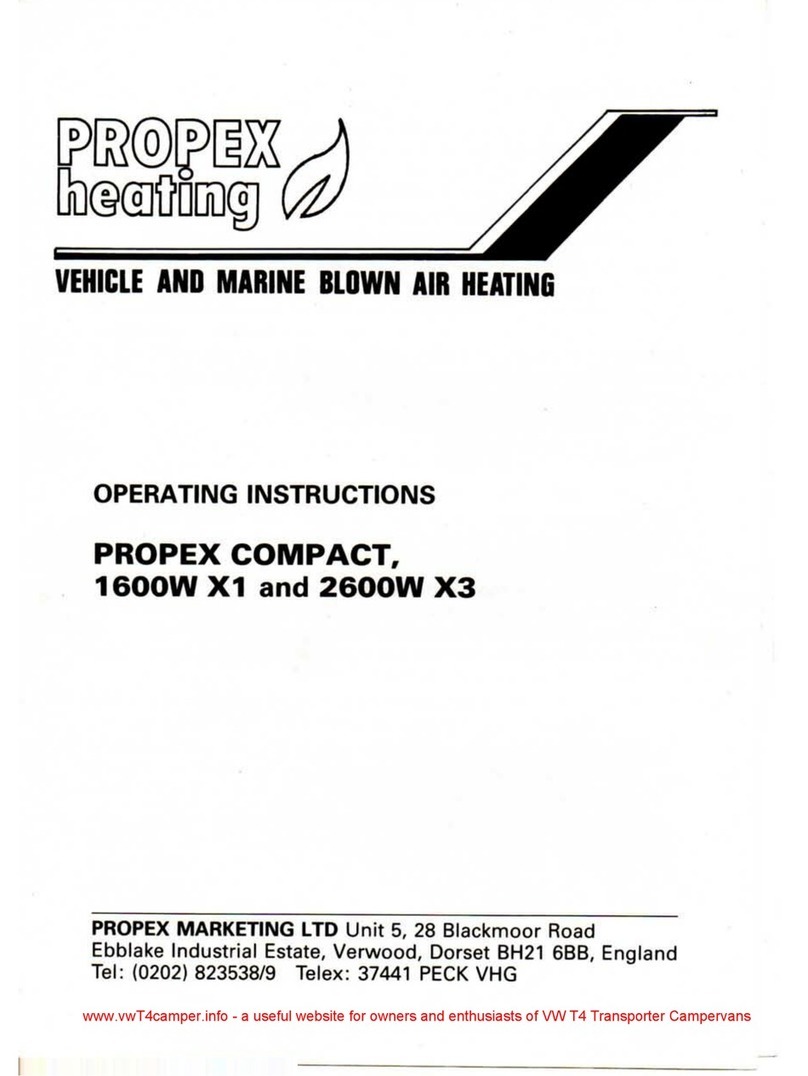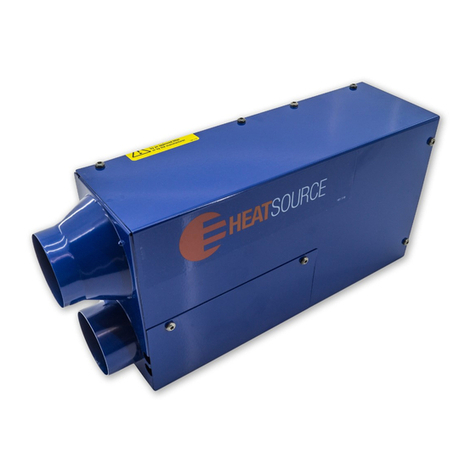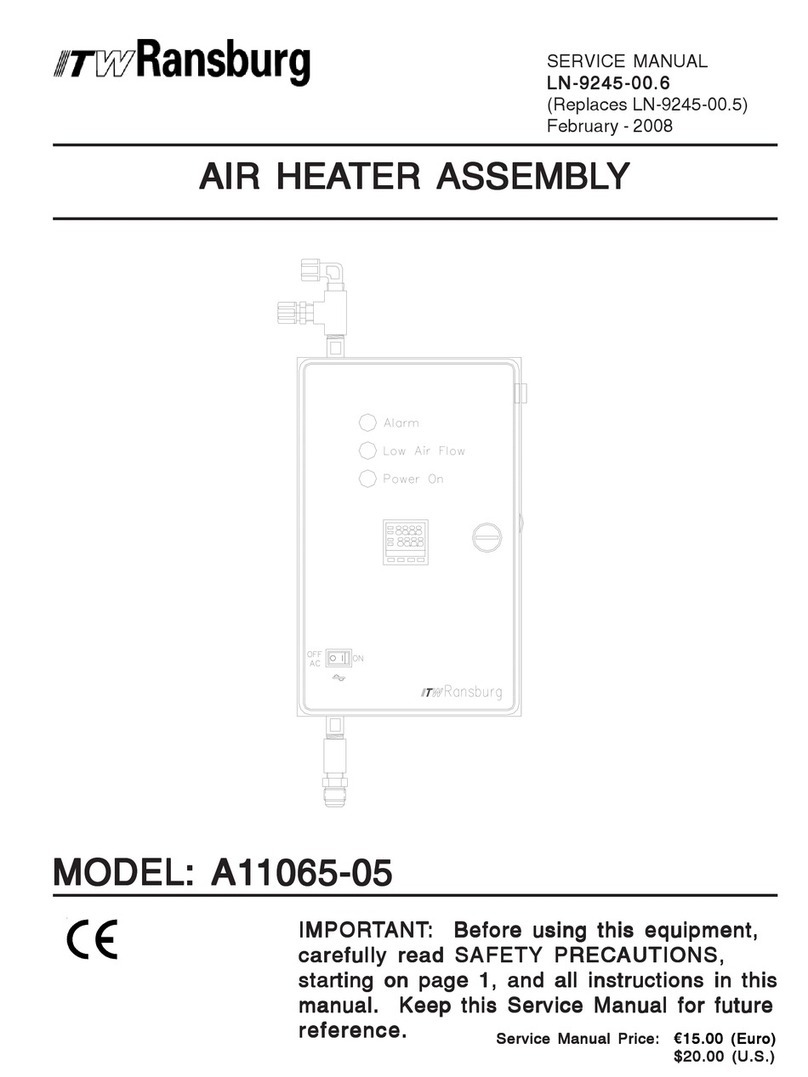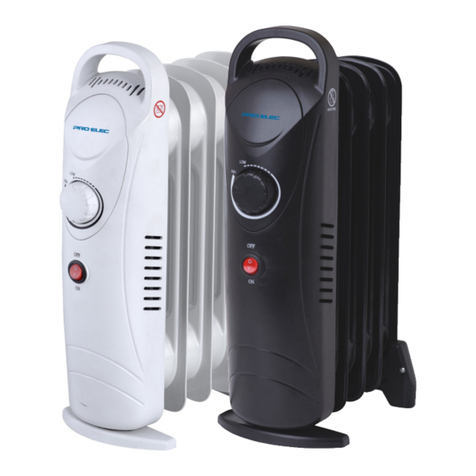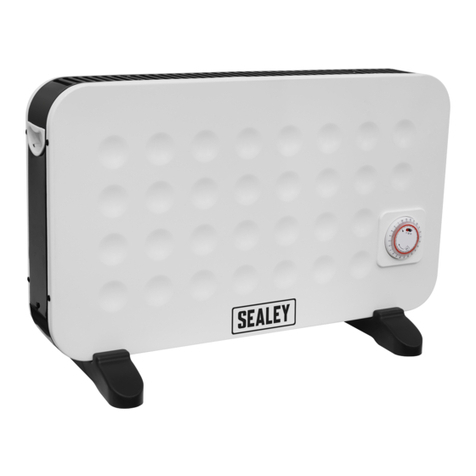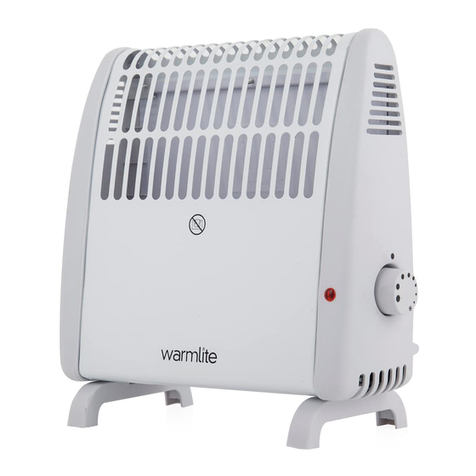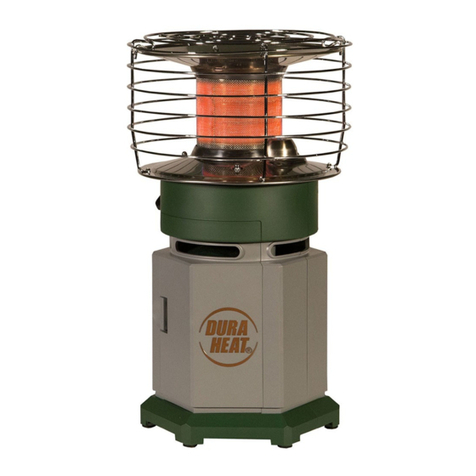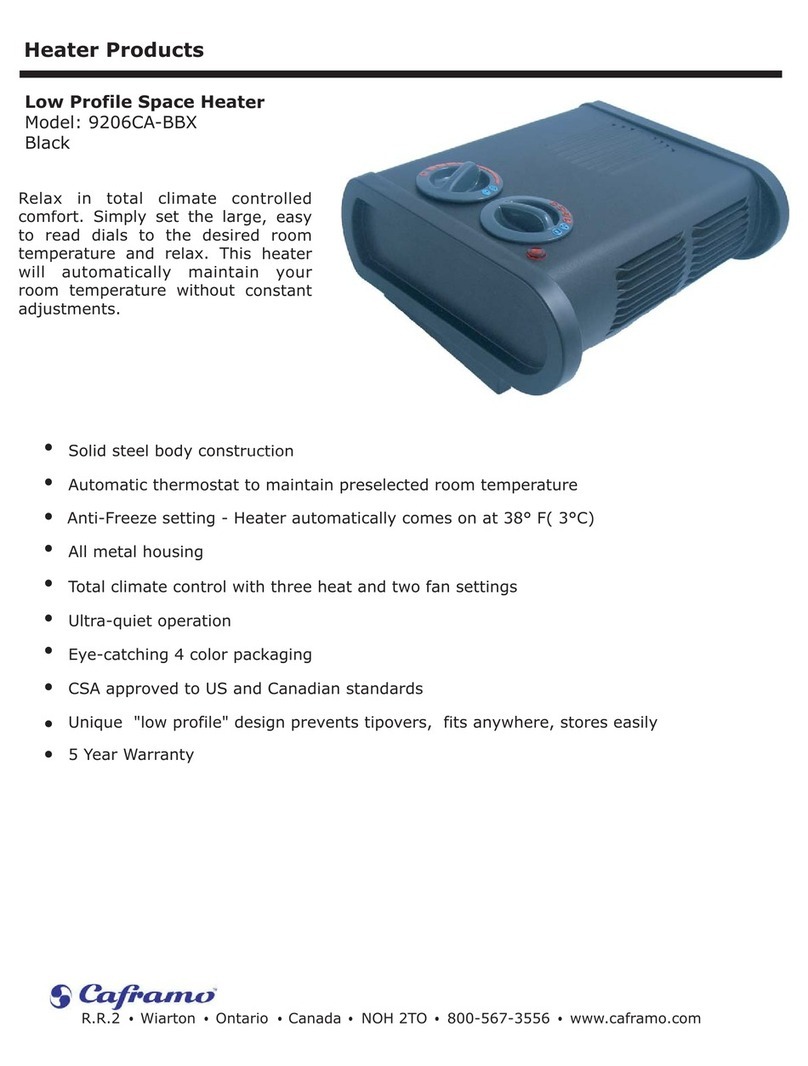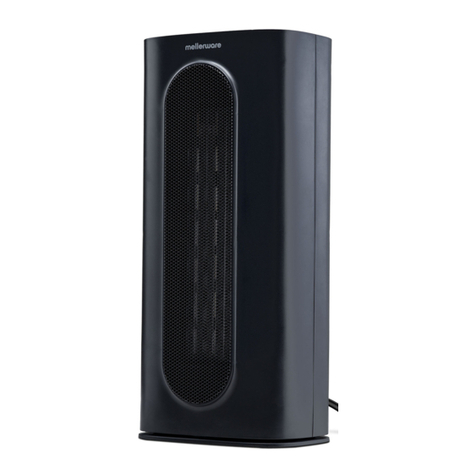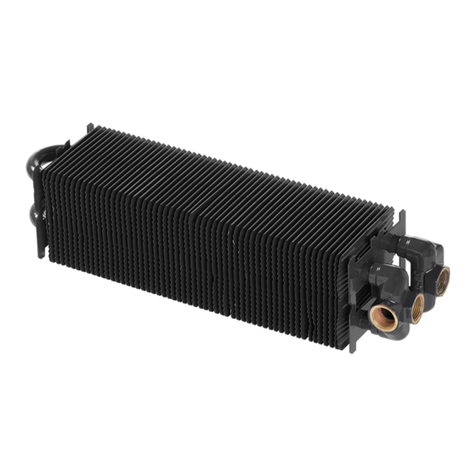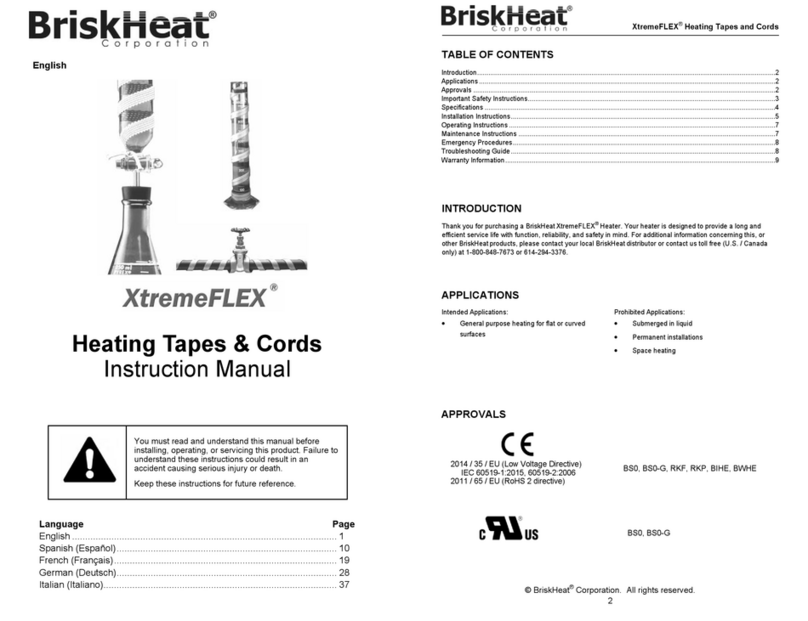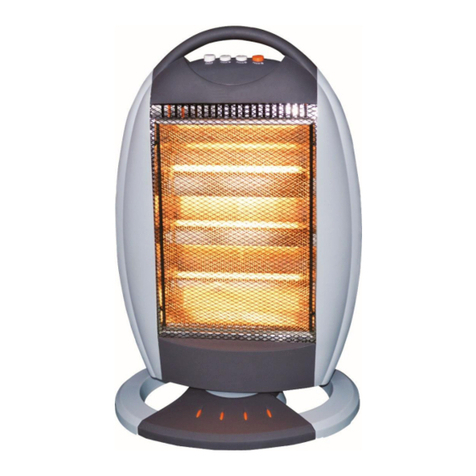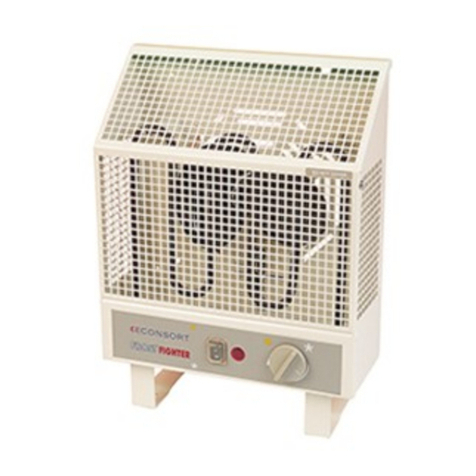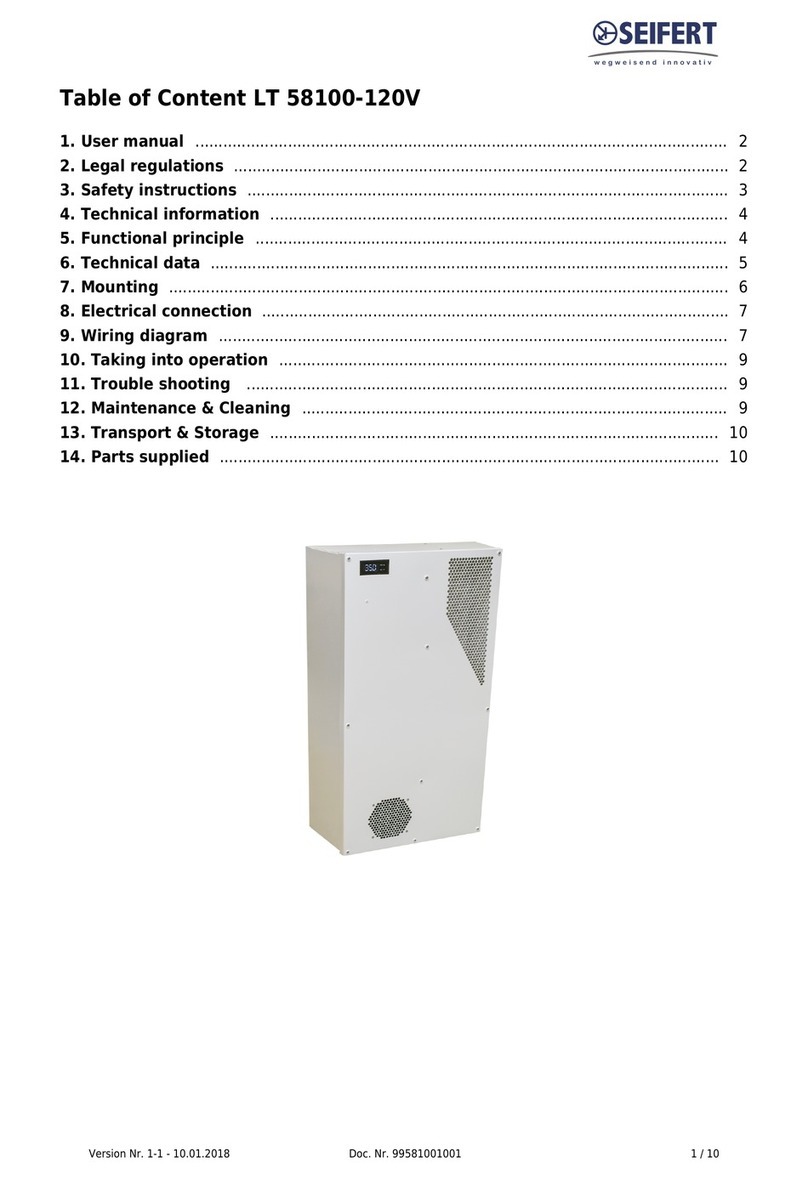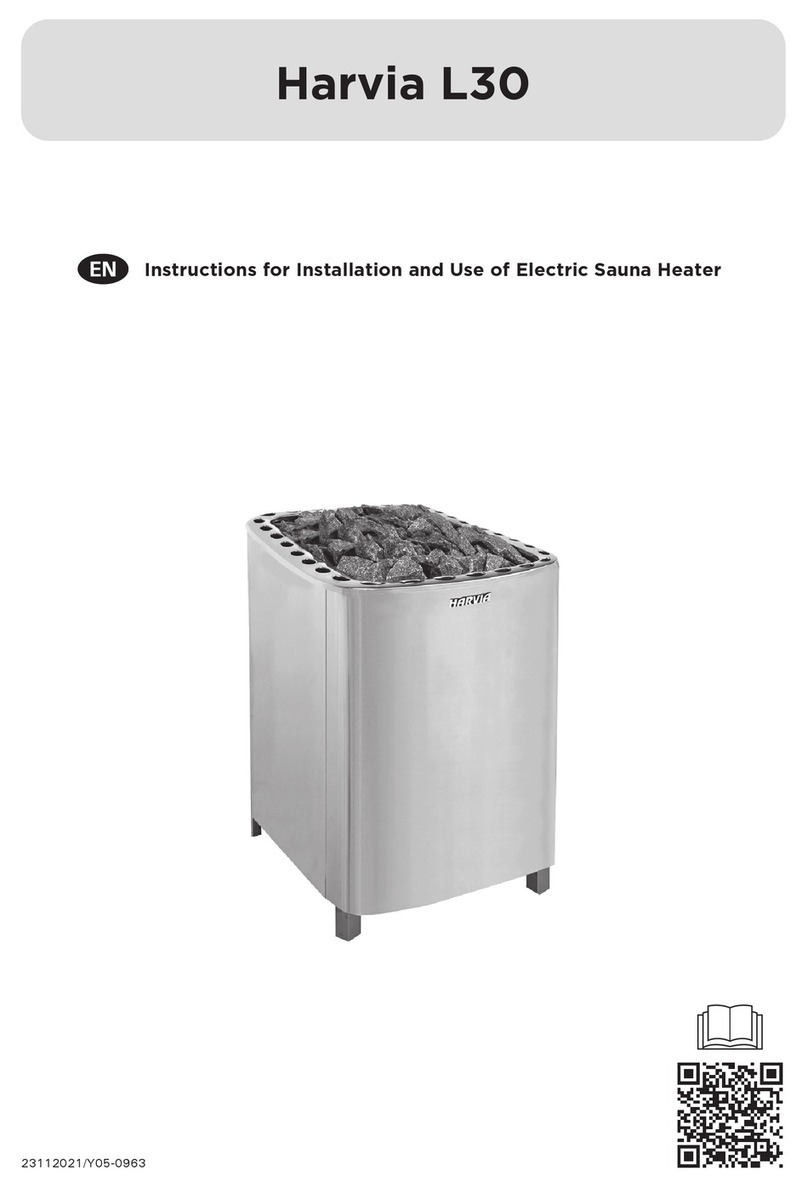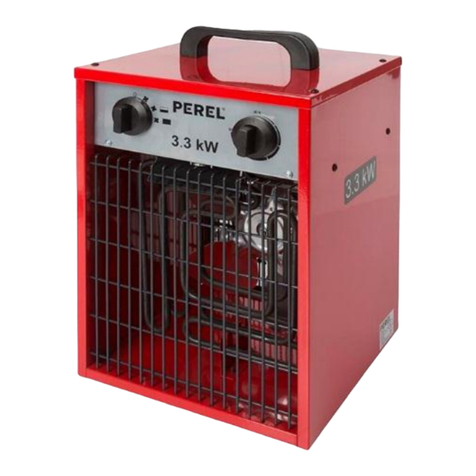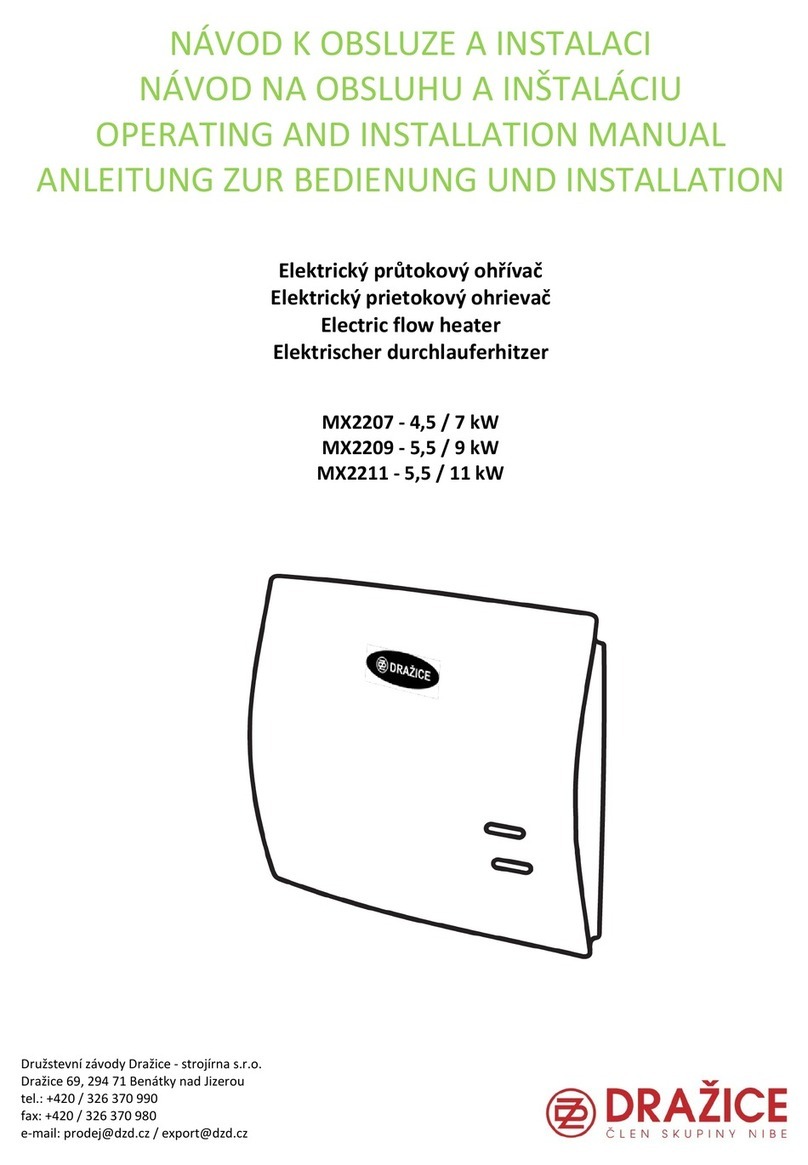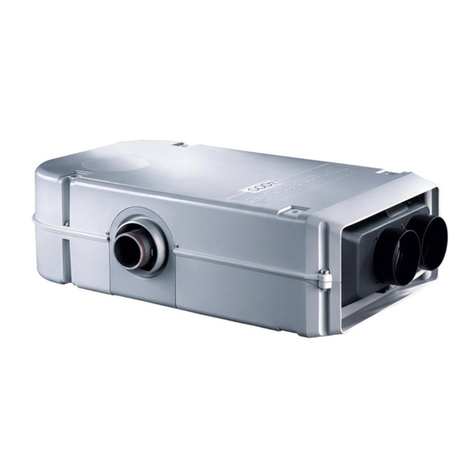Propex Heatsource HS2800 Installation instructions

Manufactured By: Munster Simms Engineering
Distributed by; PROPEX HEATING & LEISURE LTD
Unit 10, Carvers Industrial Estate,
Ringwood, Hampshire. BH24 1JS
Tel: +44 (0)333 0110 488
Website: www.propexheatsource.co.uk
Email: info@propexheatsource.co.uk
Vehicle
Installation
&
Operation Instructions
From April 2018
E N G I N E E R E D F O RE N G I N E E R E D F O R
C O M F O R T & R E L I A B I L I T YC O M F O R T & R E L I A B I L I T Y
180.122_0418
Issue 6L
Lockout Clearing Procedure
The lockout must be cleared by turning the ‘Fan Only’ setting on the control panel, ‘on’, ‘off’
and ‘on’ again within 2.5 seconds. If the first lockout reset attempt is unsuccessful, you can
retry an additional 4 times. If the lockout still will not clear (identified by a solid LED), please
turn off the heater, check the heater for faults, power up the heater and then further lockout
reset attempts can be made.
LOCKOUTS
The installation must be inspected and tested annually by a registered person (see item a)
on page 2) and any servicing and cleaning identified carried out. Servicing and removal of
the main cover must only be performed by an approved fitter or the manufacturer.
The heater should not be left for long periods without use. It is advisable to run the unit for
short periods throughout the summer.
The exhaust and inlet pipes should be inspected periodically for damage and any build-up
of dirt around the ends. Clean or replace as necessary.
The heater, its gas supply, and flues for the products of combustion are to be inspected in
accordance with national regulations or if these do not exist, the manufacturer’s
recommendations, however, it is advised that this should be done at least annually.
MAINTENANCE

SAFETY WARNINGS & GENERAL INFORMATION
The Heatsource HS2800 is intended for use only as a space heater in caravans, motor
caravans, mobile homes/units.
Installation and servicing of this appliance must only be carried out by persons registered
with the Gas Safety Register (GB), or the relevant national organisation, in accordance
with the relevant regulatory and safety requirements.
Heater installations must comply with the current European standards for Motorhomes /
Caravans.
This heater is not suitable for installation on the outside of the vehicle.
The heater must not be operated when refueling: the vehicle, towing vehicle, other
appliances or when the vehicle is in a confined space, such as a garage.
The exhaust gas outlet must not be fitted on the entry door nor in any position where
combustion products may enter the interior.
The heater is designed to operate on Propane or Butane. Under no circumstances should
an adjustable regulator be used.
Do not allow materials to come into direct contact with the heater. Under no
circumstances must the re-circulation air inlet be covered or obstructed at any time.
The Heatsource HS2800 heater has a type C53 flue, and has been tested and passed the
relevant sections of the following standards:
Gas Appliance Regulation (EU) 2016/426 on the approximation of the laws of the Member States
relating to appliances burning gaseous fuels.
Low Voltage Directive 2014/35/EU on the harmonization of the laws of the Member States relating to
electrical equipment designed for use within certain voltage limits.
Electromagnetic Compatibility Directive 2014/30/EU, on the approximation of the laws of the Member
States relating to electromagnetic compatibility.
Automotive EMC Directive 2004/104/EC (latest amendment 2009/19/EC) as per regulation 10.05
CE mark first affixed: November 2009
This product complies with all relevant European directives and standards. Please contact Propex if
further details are required.
A data label is situated adjacent to the gas inlet.
The gas supply line should be checked regularly for damage or leaks and tested under
pressure with a proprietary leak tester. NEVER TEST FOR GAS LEAKS WITH NAKED
FLAME. If a gas leak is detected or smelt, turn off gas at the bottle immediately and
ventilate the area. Contact a registered installer (see a) above) to rectify the problem.
IMPORTANT: Do not direct the combustion products outlet terminal
(exhaust flue) towards the combustion air inlet terminal.
For this appliance in Europe the standard is BS EN 1949:2011 (Specification for the
installation of LPG systems for habitable purposes in leisure accommodation vehicles and
in other road vehicles).
- 2 - - 7 -
a)
b)
c)
d)
e)
f)
g)
h)
i)
j)
k)
FAULT FINDING
The Heatsource HS2800 is equipped with an electronic diagnostic system which will detect
fault conditions ranging from poor gas or electricity supply to internal heater malfunctions. In
the event of a failure the red light on the thermostat (or timer control) will flash a certain
amount of times, pause, and repeat until switched off. Count the amount of flashes and refer
to the table below.
Overheat Cut-Out.
The HS2800 is equipped with an automatic resetting thermal cut-out (in addition to the
electronic cut-out). If the heater reaches an unusually high temperature during operation the
cut-out will disengage the gas solenoid valve. The operation of this cut-out could be caused by
either a restricted hot air outlet or air inlet, or the heater being switched off by a battery
isolating switch depriving it of its purge cycle, the fault code is 2 flashes.
FAULT FINDING TABLE
Number
of
flashes Fault Remedy
1Flame
failure
Check gas supply making sure there is gas in the bottle and no
blockage in the gas line. Ensure propane is used at
temperatures below +5°C.
Clear lockout as described on page 8.
2Overheat
fault
Check the air ducts and vents are not blocked or restricted.
Propex recommends that you wait at least 5 to 10 minutes to
allow the heater to cool before clearing lockout as described on
page 8.
3Low/ high
voltage
Minimum operating voltage is 10v and max operating voltage is
15v (for 12v heaters) when measured at the heater. Check
battery voltage. If above 10v, check connections between
heater and battery. Check alternator or external battery
charging. Clear lockout as described on page 8.
4Combustion
air fault Check combustion air inlet flue and exhaust flue for blockages.
Clear lockout as described on page 8.
5Other /
internal fault Attempt to clear lockout as described on page 8. If this fails.
contact Propex.
Solid General Two faults have occurred at the same time OR more than 5
lockout clearing attempts have been unsuccessful. Clear
lockout as described on page 8.
No
flashing PCB not
powered up Check the supply to the heater as above. Otherwise contact
Propex

A 0.75 metre length of 26mm flexible stainless steel tubing with a special end cap is
supplied for ducting the products of combustion away to the edge of the vehicle. The
tube should be fitted to the spigots on the underside of the heater using the blue
connector and hose clips provided.
A 1 metre length of combustion air pipe is provided, which is also fitted with an end
cap. This should be attached to the heater with the hose clip provided and pointed in
the same direction as the flue pipe.
A “P” clip is provided for fixing the end of the pipe to the underside of the vehicle with
the end cap slightly protruding under the sill or bumper and pointing towards the rear
of the vehicle.
These pipes must not be cut shorter than the supplied lengths. They may be
extended to a maximum length of up to 2 metres if required.
Note: The combustion air pipe can be terminated underneath the vehicle making sure
the end of it is at least 0.5 metres away from the end of the exhaust and that they are
not pointing directly at each other. Take care to ensure that both pipes have a slight
downward slope to prevent any possibility of water traps. Make sure that neither the
flue or the combustion air inlet pipe are terminated in an under-floor box section.
The flue terminals are not to be positioned within 500 mm of a refuelling point or fuel
tank breather outlet or any ventilator from the fuel system(s). The flue terminals are
not to be located within 300 mm of a ventilator for the living space or an opening part
of a window. Where the flue terminal is positioned vertically below an opening part of
a window, the appliance must be fitted with an automatic shut-off device to prevent
operation when the window is open.
- 4 -
The heater uses an 8mm (5/16”) gas connection but can be fitted with an adaptor to
take ¼” copper pipe if preferred.
The gas supply should be connected with copper gas pipe with an isolating valve
and all connections made with brass compression fittings, fitted with copper olives.
When the gas line is complete all joints should be tested for leaks using leak
detection solution - NEVER WITH A NAKED FLAME. - 5 -
GAS CONNECTION
WIRING INSTRUCTIONS
f)
g)
The Heatsource HS2800 heater is supplied with 2 wiring looms, a 2 core (red
and black) and a 6 core, both are fitted with terminals and housings to plug into
the main PCB positioned under the removable electronics cover on the heater.
The connectors on the PCB are marked CN24 (power) and CN26 & 27
(switches). Grommets are fitted to the looms which should slide into the slots
above the air inlet.
Find a suitable location for the thermostat between waist and shoulder height.
Make sure that it is not mounted in an area with poor air circulation or in an area
with above average heat, such as above a cooker, refrigerator or in direct
sunlight.
When you have chosen the location, drill a pilot hole in the area you expect to
retrieve the 6 core cable. If the clearance is OK, open the pilot hole out to
20mm.
Remove the two blanking plugs from their transit posts on the rear of the
thermostat.
Push the connector on the rear of the thermostat through the hole and fix the
thermostat into position using the two screws provided. Once happy with the
installation cover the holes with the blanking plugs.
Take the 6 core loom from the heater and connect to the plug on the rear of the
thermostat ensuring that the latches are mating correctly.
a)
b)
c)
d)
e)
f)
a)
b)
c)
Gas pressure should be verified where the gas pipe connects to the heater
using a low pressure gauge or “U” tube, any tests or connections should only be
undertaken by a registered person (see item a) on page 2).
NOTE. Net Heat Input: 2.9kw, average consumption 208 g/h.
Commissioning.
Visually check the installation before attempting to run the heater to ensure it is
installed correctly, paying particular attention to the flue. A functional check of its
operation should be carried out.
d)
e)
f)
Find suitable locations for the hot air outlet and re-circulation air inlet vent and drill a
5mm pilot hole through each centre. Using a 95mm hole saw, drill out the holes
and fix the vents in position using the black 1/2 x No.8 counter sunk self tapping
screws provided.
Fix the 76mm reducer (push fit) into the back of the hot air outlet. Cut the 76mm
ducting to length and fix to the heater and the outlet using the hose clips provided.
NOTE: There is no reducing spigot provided for the air inlet vent, as it is not
necessary to put ducting on it.
d)
e)

Switch on
Heater motor starts
20 second pre-purge to clear gases from heat exchanger
Gas valve opens
Spark generator operates
Motor speeds up to normal operating speed
Heater switches off when thermostat temperature reached
Post Purge – fan runs on its own for 3 minutes
Temperature drops
Cycle repeated
- 6 -
Find a suitable location which allows access to the heater with suitable room for service
and inspection, usually in a bed-box or locker. The Heatsource HS2800 should be
fitted in an area allowing a minimum distance of 25mm from adjacent walls, ceiling or
shelves from the main body of the heater. Check that there are no chassis members
underneath the location of the exhaust and combustion air spigots.
Using the template provided, drill a 3mm pilot hole through the exhaust and
combustion air spigot centres. Examine underneath the vehicle to check that there is
adequate clearance for a 40mm hole saw. Cut away any carpet or matting around the
exhaust and open out the holes to 40mm. Ensure that three sides of the underfloor
space are kept open and are not obstructed.
Loosen the 4 x M4 screws on the base of the heater and slot the mounting brackets
into position, then re-tighten the screws. Mount the heater in position and mark the 4
mounting holes on the floor of the vehicle for screwing the heater down. Remove the
heater and drill 4 x 3.5mm holes in the marked positions, then screw the heater in
place with the 3/4 x No.8 self tapping screws provided.
- 3 -
FITTING THE HEATER
OPERATION
g)
h)
a)
b)
c)
d)
e)
f)
g) a)
b)
c)
VEHICLE INSTALLATION
Before use: Pay particular attention to the exhaust outlet and combustion air
inlets to check that neither have been blocked or damaged.
Check the gas supply is turned on and that the battery voltage is correct.
Minimum operating voltage is 10v and max. operating voltage is 15v (for 12v
heaters) when measured at the heater.
Rotate the thermostat temperature dial fully anti-clockwise and put the 3 position
knob to the flame position.
Rotate the temperature dial until the fan starts. There will be a pre-purge pause
of approx 20 seconds to allow any un-burnt gas to leave the flue. A green LED
will illuminate after successful flame ignition.
If there is air in the line it may take a few attempts for the gas to ignite. See page
7 for gas lockout resetting. If ignition is not satisfactory the red LED will flash,
refer to the trouble shooting guide page 7.
Find the desired temperature setting by adjusting the dial on the thermostat. The
heater will then cycle on and off to maintain that temperature.
When the set temperature is reached the green light will go out and the heater will
start its post purge cycle.
If the 3 position knob is in the fan position the green LED will illuminate and the
fan will blow cold air continuously.
Sequence of operation:
l)
m)
n)
o)
Where the open end of the exhaust flue terminates, three sides of the under-floor
space are to be kept open and not obstructed, and not contain through floor
ventilation openings.
The heater must not be used when the vehicle is in motion unless fitted with the
relevant flue terminal.
Observe all warnings.
In the unlikely event of leaks in the gas system, or if there is a smell of gas:
- Extinguish all naked flames - Do not smoke
- Do not operate any electrical switches - Shut off gas connection
- Turn off all gas appliances - Open windows and doors for ventilation
Get the system thoroughly checked by a registered gas engineer.
Suitable for use on boats when supplied with correct flue terminal.
If access to the rear of your panel is limited then pull the cable end from the
heater through your previously drilled hole and make the connections before
pushing it back through the hole, you may find you need to drill a 25mm hole if
using this method.
Run the 2 core cable to a convenient DC supply (usually at the battery) and
connect using the fuse holder supplied. Check battery is 12v. Refer to data label
for heater voltage. Insert the 5 amp fuse and test.
Ensure ALL electrical connections are completed before connecting to supply.
Min 500mm
Other Propex Heater manuals
